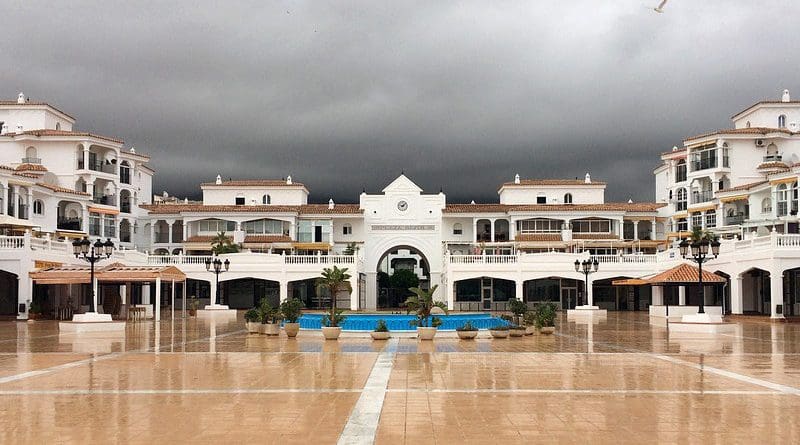Despite Raining Less, Torrentiality Of Mediterranean Watercourses Has Increased
Ana Camarasa, Professor of Physical Geography at the University of Valencia, has compared the rainfall registered in the Júcar Hydrographic Confederation between 1989 and 2018. By analysing more than 800 rainfalls and more than 140 floods in four Valencian boulevards (including the ravines of Poyo and Carraixet, at the south and north of València) the expert concludes that in the final part of the studied period there have been more situations with risk, and also the avenues have intensified due to human action by reducing infiltration and increasing surface overflow and erosion.
The data analysis from the Júcar Hydrographic Confederation (which manages all the Valencian rivers except the Segura basin, in the south, and the Bergantes basin, in the north), prepared by Ana Camarasa, confirms that the appearance of floods is more and more frequent derived from periods of intense rain in shorter periods of time. The rains show more intensity peaks at the beginning of the storms, which increases the risk of flooding and decreases the absorption capacity of the basins, as they occur in shorter periods of time. All of this is related to the climate change context we are currently in.
In addition, in this meteorological context, the amount of rainwater that aquifers can absorb decreases (more intensity in less time), causing this water to add to the flow of the flood. In addition to the Poyo and the Carraixet, which historically have caused large-scale floods, the rivers of Vernissa and the Gallinera watercourse (south of the province of Valencia and north of Alicante, respectively) have also been analysed.
In addition to more precipitations in less time, added anthropic factors have increased the risk of floods in recent years. Specifically, the urbanisation of ravine beds or flow absorption areas (causing less infiltration into the subsoil and the expulsion of water in greater volumes and less time) which causes an increase in the surface flow. This factor, according to Ana Camarasa in the article published in the journal Cuadernos de Investigación Geográfica, “produces an increase in these ephemeral streams and an increase in the aridification of river systems”. Aridification (the dragging of fertile lands and the disappearance of these and vegetation) causes less retention of flows in subsequent floods.
The objective of this research is the exhaustive study of the key aspects of Mediterranean hydrogeomorphology in general and of the Valencian one in particular, key issues of rain-flow conversion and the generation of floods in watercourses, as well as their evolution in the current context of environmental change. This is done with the intention of anticipating the appearance of these sporadic floods that occur in the boulevards, systems in most cases without retention systems such as dams and reservoirs. European Union legislation currently recognises the specificity of these systems, as well as the risk they entail.
Methodology
The work has used previous research, as well as data from the Automatic Hydrological Information System (SAIH), a set of stations distributed in the river basins of the Júcar Hydrographic Confederation, which measure the flow and rainfall in variable intervals (every five minutes, by hourly periods, by days or months). Some of the rain events analysed are in October 2000 (with more than 500 litres per square metre in the provinces of Valencia or Castellón), December 2004 or October 2018, among others.
In her study, Ana Camarasa has used and compared elements such as precipitation (millimetres of rain per hour); the volume of water accumulated in the basin (in cubic hectometres, one hectometre equals one billion litres of water); or the flow rates, measured in cubic metres per second (one cubic metre equals one thousand litres per second passing through a point) or litres per second and square kilometre. Regarding precipitation, it has focused during the approximately 30 years of events, on the accumulated, the maximum intensity, the average intensity, as well as the persistence of rain in each storm.

